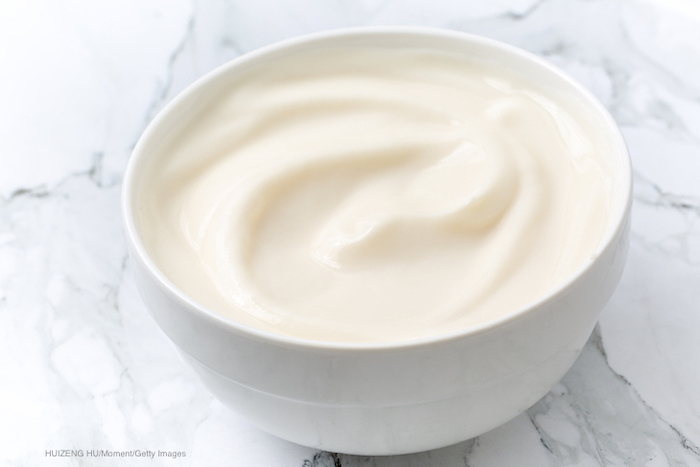PCC Community Markets is recalling all PCC brand organic, grass-fed yogurt after state health officials identified it as the source of a multi-county E. coli O157:H7 outbreak in Washington. Washington state investigators publicly linked PCC organic yogurt to the E. coli outbreak on May 15th. The PCC yogurt E. coli outbreak includes 11 confirmed cases.
PCC is also recalling deli items made with the yogurt. They are:
• Yogurt (salad bar)
• Butter Chicken (hot bar and to-go casseroles)
• Spicy Yellow Curry Chicken (hot bar and to-go casseroles)
• Tzatziki Sauce (grain bowl bar, to-go spreads)
• Sticky Toffee Pudding (refrigerated desserts)
PCC yogurt is made by Pure Eire Dairy of Othello, WA which sells pasteurized dairy products and raw (unpasteurized) milk under the Pure Eire brand name. In a Facebook post last night, Pure Eire said it had been contacted by the Washington State Department of Health about possible E. coli contamination of its yogurt products. Pure Eire said it is recalling all of its yogurt and halting yogurt production while state health officials investigate. Pure Eire yogurt was sold at Super 1 Foods, Andy’s Market and Blue Valley Meats in Walla Walla County.
Contact the Pritzker Hageman E. coli Lawyers Today
Phone: 888-377-8900 | Text: 612-261-0856
Contact our E. coli Food Safety Lawyers Online
Previous Pure Eire E. coli Recall
This is not the first time a dairy product produced by Pure Eire has been recalled for E. coli. In 2013, the company issued a raw milk recall and halted production while authorities investigated. That temporary suspension or raw milk sales lasted about 10 days.
About three weeks prior to that recall, Pure Eire recalled some of its pasteurized milk and cream after the Washington Department of Agriculture noted a pasteurization problem. The issue was detected and corrected during an inspection, the company said at that time.
Pure Eire uses vat pasteurization, also known as “batch” or “low-temperature long-time pasteurization.” According to the U.S. Food and Drug Administration (FDA), this method, which involves heating the dairy product to a certain temperature for 30 minutes and then quickly cooling it, is “one of the most effective methods of pasteurization.” A critical element of this process is that the temperature in the air space above the vat constantly remains 5˚ F above the holding temperature of the liquid in the vat. The problem in 2013, was with air space temperatures during pasteurization.
E. coli O157:H7 Outbreak
Since early May, health officials have been investigating an E. coli outbreak in Washington that now includes 11 confirmed cases. Six of the patients are children under the age of 10. Seven people have been hospitalized, three of them with hemolytic uremic syndrome (HUS), a form of kidney failure associated with E. coli infections.
Up until today, health officials suspected some kind of fresh produce to be the source of the outbreak. King County health officials first discovered the outbreak about 10 days ago. At that time, seven children in King County, all under the age of 14, were sick. Six of them were hospitalized, two with HUS. Then two cases from separate households were discovered in neighboring Snohomish County. One of the patients was a woman in her 20s, the other a child under 10. Like most of the children in King County, the child in Snohomish County was so sick hospitalization was required.
A few days after the Snohomish illnesses were reported, cases popped up in Benton and Walla Walla counties, more than two hundred miles away. That’s when the state health department took over the investigation.
State health officials are performing genetic tests on the E. coli cultured from each patient. These tests find the genetic “fingerprint” of each bacterial strain. When investigators find matches, it indicates the patients were sickened by the same source.
E. coli O157:H7 and HUS
Many E. coli strains exist in nature and are harmless. But some strains, including E. coli O157:H7, produce a substance that is poison to humans called a Shiga toxin. E. coli O157:H7 bacteria live almost exclusively in the intestines of cattle.
Symptoms of an E. coli infection usually develop within three to five days of eating contaminated food. They include abdominal cramps and diarrhea that can be bloody. The people sickened in this outbreak, who range in age from under 10 to over 70 years old, reported onset of illness dates ranging from March 9 to April 21, 2021.
Between 5 percent and 10 percent of E. coli patients develop HUS, most often they are children. This complication, which can cause kidney failure, seizure, stroke, coma, and death, usually develops one week after the onset of E. coli symptoms. Symptoms of HUS include pale skin, decreased urination, fatigue, fainting, unexplained weakness and bruising and bloody diarrhea. Anyone with HUS symptoms should seek immediate, emergency medical care.
E. coli Lawsuit Consultation
Pritzker Hageman E. coli lawyers have represented clients in every major E. coli outbreak in the U.S. Our clients have included those who battled HUS and families who have suffered the wrongful death of a loved one. If you were sickened in this outbreak and would like a free consultation with an experienced E. coli lawyer, please contact the Pritzker Hageman E. coli Legal Team. You can reach us by calling 1-888-377-8900, sending a text to 612-261-0856, or by completing the form below. There is no obligation and you don’t pay us unless we win.

